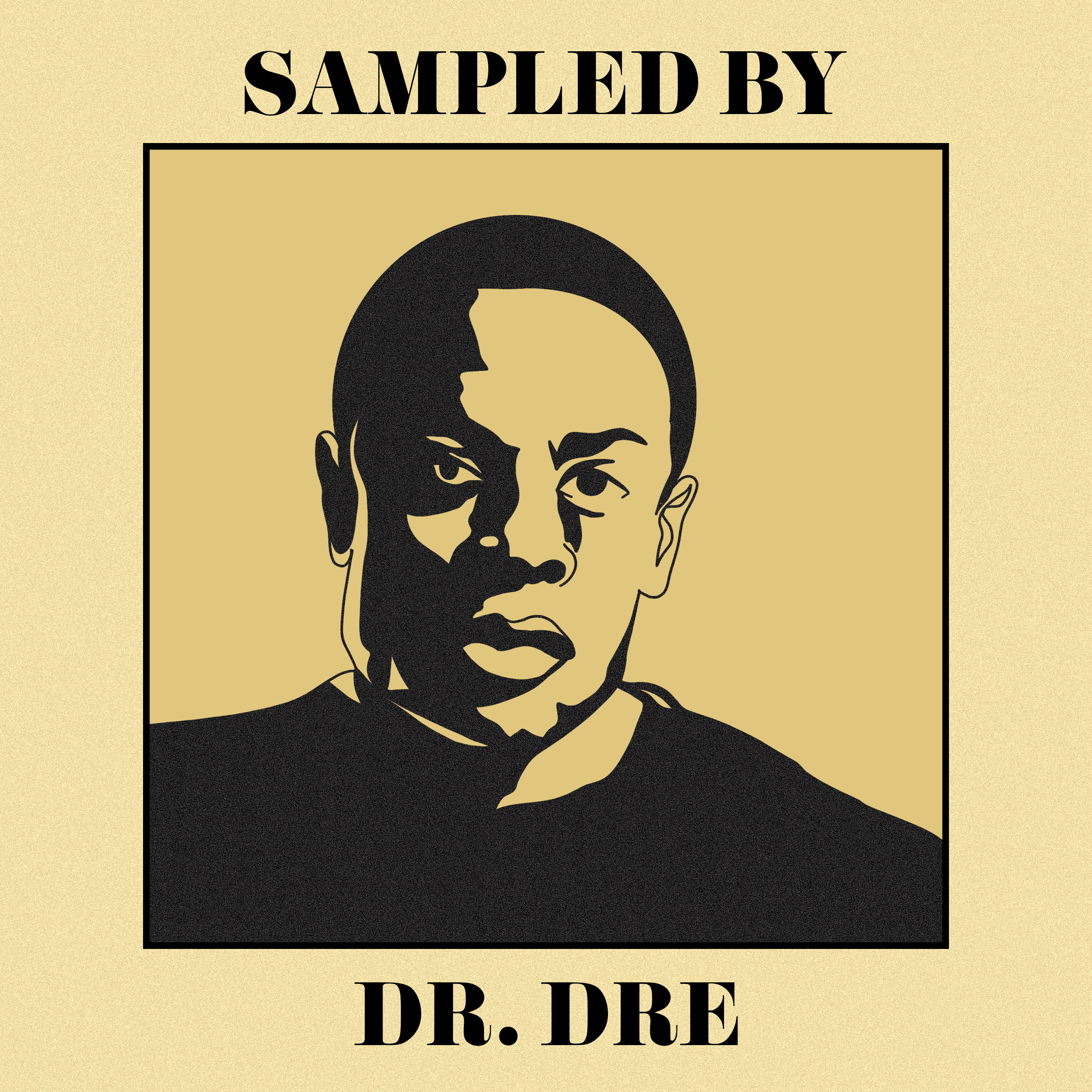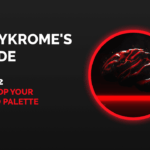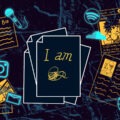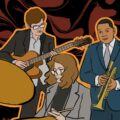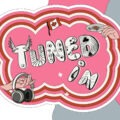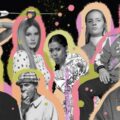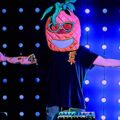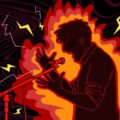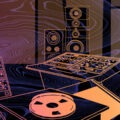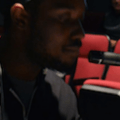Dr. Dre, whose personal music collection included an alleged 80 000 records, has an almost encyclopaedic musical knowledge and fine-tuned ear for killer hooks. His ability to discover and revive older music helped him become the wildly successful producer that he is today. In this article, we’ll look at some of Dre’s most influential songs, and review how his sampling techniques contributed to the massive success he’s achieved as a producer.
Andre Romelle Young, known as Dr. Dre, is one of hip hop’s most respected producers with an estimated $800 million dollar fortune to his name. Born in Compton, California in 1965 to singer and musician parents, he inherited a passion for music from an early age. He initially turned his passion into a DJ gig with LA-based World Class Wreckin’ Cru in 1984. Thanks to connections that he made working the nightclub scene, he soon formed N.W.A. with Eazy-E, Ice Cube, DJ Yella, and MC Ren. Dre would go on to develop the sound of multiple hip hop genres, launching several massive careers in the process.
Sampling
In the early days of hip hop, DJs and producers would chop up a record they liked, put a beat under it, and call it their own. That all changed in 1989 when The Turtles members sued De La Soul for using an uncleared sample from their 1969 track “You Showed Me”. After this incident, producers and record companies had to make absolutely certain that every sample was cleared, which led to a significant drop in sample usage. This became an enormous advantage for producers like Dre, who on “Let Me Ride”, is almost flaunting the fact that he was able to clear samples with Parliament, James Brown, and Bill Withers. If you’re curious how plagiarism laws impacted sampling in hip hop and other genres, be sure to read our series on plagiarism.
Interpolation
Dre would eventually start using a production technique called interpolation. In popular music, the term means to take the melody of a song and re-record it instead of directly sampling it. Dre’s use of synths and live band recordings allowed for greater flexibility in the studio environment, giving him more creative control over his influences and helping him get around costly licensing issues. A great example of this technique in action is on the track “Phone Tap”, where a haunting guitar riff from the Chris Barber’s Jazz Band song “Petite Fleur” is interpolated. The riff is recorded in the same key, but with less reverb and without the mellow jazz drums underneath.
Branching Out
Up until 1997, Dre sourced most of his samples from soul, R&B and funk records, but starting with his one-album project The Firm, Dr. Dre expanded his horizons and began incorporating other genres into the main hooks of his songs. On 2001‘s “Murder Ink”, the entire track is based on the anxiety-inducing piano riff from John Carpenter’s horror film Halloween, marking a significant departure from earlier samples like James Brown’s “The Funky Drummer” and Ohio Player’s “Funky Worm”. Dre would return to his roots for G-funk classic The Chronic before again widening his range of influences in his work with Eminem.
A selection of Dr. Dre’s greatest songs and the samples used
1. N.W.A. – “Dopeman”
Compton, California, 1988
This is a very early Dre track that features one of the first examples of the wavering synth that came to define the G-funk sound. The synth sample is taken from the breakdown on “Funky Worm”, and is borrowed almost in its entirety, in line with how most producers were using samples during this era. The track also features Easy-E spouting lyrics borrowed from the film Scarface: “To be a dopeman, boy, you must qualify / don’t get high off your own supply.” Also included is a drum riff that can be heard first on “Dance to the Drummer’s Beat” by Herman Kelly & Life, and short vocal samples are taken from “My Posse” by C.I.A., and “Freestyle” by Roxanne Shanté.
Intro & hook sample of Ohio Players – “Funky Worm”
Dayton, Ohio, 1972
(Hear the sample at 0:48)
Drums sample of Herman Kelly & Life – “Dance to the Drummer’s Beat”
Miami, Florida 1978
Vocal sample of C.I.A. – “My Posse”
Los Angeles, California, 1987
(Hear the sample at 4:26)
2. Dr. Dre ft. Snoop Dogg, Jewell, & RC – “Let Me Ride”
Los Angeles, California, 1992
Dre increases the wavering synth speed ever so slightly from Parliament’s “Mothership Connection” to build “Let Me Ride”, giving the new track a classic G-funk sound. Interpolation from Parliament’s “Swing Down, Sweet Chariot” can be heard in Snoop’s lyrics of “Swing down sweet chariot and let me ride,” as well as a short vocal clip taken from the original. Contrary to Dre’s later work, this song is almost entirely created using samples. Drums were lifted directly from “Kissing My Love” and “Funky Drummer”, and a beat pattern from “Ruff Rhyme” is audible around the quarter mark of the Dre track.
Instrumental & main hook sample of Parliament – “Mothership Connection (Star Child)”
Plainfield, New Jersey, 1975
(Hear the sample at 5:35)
Drums sample of Bill Withers – “Kissing My Love”
Slab Fork, West Virginia, 1972
Vocal chorus hook of Parliament – “Swing Down, Sweet Chariot (Live/1977)”
Plainfield, New Jersey, 1977
Drums sample of James Brown – “Funky Drummer”
Cincinnati, 1970
(Hear the sample at 5:31)
Drums sample of King Tee – “Ruff Rhyme (Back Again)”
Compton, California, 1990
3. Dr. Dre ft. Snoop Doggy Dogg & Daz Dillinger – “Lil’ Ghetto Boy”
Los Angeles, California, 1992
This track features Dre’s attempt to shed light on the harm of gun violence that’s often flagrantly presented in gangsta rap. The moody vibe and haunting chorus are taken from a track by soul singer and musician Donny Hathaway. Subtle hints of optimism in the song come from a funky sample taken from “I Get Lifted” by KC & The Sunshine Band, and a quiet string section from “Endless Flight” by Rodney Franklin.
Instrumental sample of Donny Hathaway – “Little Ghetto Boy”
Chicago, Illinois, 1972
Funky rhythm sample of KC & The Sunshine Band – “I Get Lifted”
Hialeah, Florida, 1975
Strings sample of Rodney Franklin – “Endless Flight”
California, 1981
4. Tupac ft. Dr. Dre & Roger Troutman – “California Love”
Los Angeles, California, 1995
“California Love” was Tupac’s comeback single following a lengthy prison sentence, and Dre knew that this track needed to be rocking, badass, and original to bring back public interest. Dre pulled this off by brilliantly combining the driving piano in “Woman to Woman” with an anthemic chorus that was a chest-thumping ode to California living. He gave the whole thing a clever twist by resurrecting Roger Troutman and his “talk box” sound for the vocals, a technique that was used to interpolate lyrics from “West Coast Poplock” by Ronnie Hudson & The Street People.
Main riff sample of Joe Cocker – “Woman To Woman”
Sheffield, England, 1972
Talk box sample & main lyrical hook interpolation of Zapp & Roger – “Dance Floor”
Dayton, Ohio, 1982
(Hear the sample at 2:11)
Pre-chorus lyrics interpolation of Ronnie Hudson – “West Coast Poplock”
Hollywood, California 1982
(Hear the sample at 0:19)
5. Blackstreet – “No Diggity”
New York City, New York, 1996
In 1996, Dr. Dre was in the process of leaving Death Row Records, the company that he’d founded with Suge Knight. At this time, he offered the “No Diggity” beat to Tupac, who turned it down. Dr. Dre instead sold it to Teddy Riley, who brought it to R&B group Blackstreet. Tupac wasn’t happy when they took the beat and blew up, leading to Tupac making his own diss track with the “No Diggity” beat. The final Dre version features a mellow acoustic riff and vocal “mmm hmmm” by the suave Bill Withers, creating a simple and catchy song that also became Blackstreet’s biggest hit.
Instrumental sample of Bill Withers – “Grandma’s Hands”
Slab Fork, West Virginia, 1971
6. The Firm – “Phone Tap”
New York City, New York, 1997
The Firm was one of the first groups Dre produced for with his new label Aftermath. Despite their project The Album not living up to financial expectations, it was a great example of Dre’s ability to reinvent himself musically. On “Phone Tap” he lays a moody, down-tempo jazz track on top of a classic beat, creating an atmospheric vibe that was a real departure from the G-funk sound he’d helped pioneer.
Instrumental sample of Chris Barber Band – “Petite Fleur”
Hertfordshire, England, 1958
(Hear the sample at 1:45)
7. Dr. Dre ft. Hittman & Ms. Roq – “Murder Ink”
Los Angeles, California, 1999
Fourteen sequels have been made for Halloween since its original release in 1978, leaving pop culture with unforgettable tropes like the terrifying killer “Halloween mask” and the panic-inducing minor-key piano riff that appears whenever Michael Myers is nearby. On “Murder Ink”, Dre samples the Halloween piano to create an unsettling sonic bed that perfectly accompanies the track’s disturbing lyrics. “Murder Ink” also interpolates Jamaican rapper Ini Kamoze’s “Here Comes the Hotstepper” for the chorus, with Dre modifying it to sound far more sinister then the up-beat original.
Melody sample/interpolation of John Carpenter – “Halloween”
USA, 1978
Main lyrical hook interpolation of Ini Kamoze – “Here Comes the Hotstepper”
Saint Mary, Jamaica, 1994
(Hear the sample at 0:21)
8. Eminem – “My Name Is”
St. Joseph, Missouri, 1999
After placing second in the LA 1997 Rap Olympics, Eminem’s Slim Shady EP made its way to Jimmy Iovine and Dr. Dre at Aftermath Records. Dre reflected that he’d “never found anything from a demo tape or a CD,” but after hearing Em, immediately said “find him.” In order to highlight Eminem’s crafty lyricism and rapid-fire delivery, Dre looked to the Labbi Siffre song “I Got The…” for support. The song’s intro had been previously sampled by Jay-Z (among others), so Dre instead opted for the breakdown, which features a vintage organ riff. The quirky sound was well-suited for Eminem’s persona, and it helped play a central role in building this double platinum single.
Instrumental sample/interpolation of Labi Siffre – “I Got The…”
London, England, 1975
(Hear the sample at 2:30)
9. Dr. Dre ft. Snoop Dog – “Still D.R.E.”
Los Angeles, California, 1999
Seven years after his genre-defining debut album The Chronic came out, Dre finally dropped 2001, succeeding in not only re-inventing himself, but smashing all critical expectations. According to an interview by Red Bull Music Academy with Scott Storch, who created the iconic piano sounds on “Still D.R.E.”, the creative freedom that Dre fostered at his studio was key to making the track. “Dre programmed this kick and snare… I was just noodling on the piano. I started playing, ‘bling, bling, bling’ on top of this drum pattern that he had. And he poked his head in and he was like, ‘That’s it.’ By the end of the day, the song was shipped off to Jay-Z to pen”. “Still D.R.E.” was the lead single on the multi-platinum 2001. It features lyrical interpolation from the song “Serial Killa” that was on Snoop’s first album, Doggystyle.
Lyrical hook interpolation of Snoop Dogg – “Serial Killa (feat. The D.O.C., Tha Dogg Pound & RBX)”
Los Angeles, California, 1993
(Hear the sample at 0:39)
10. Dr. Dre ft. Snoop Dogg, Nate Dogg, & Kurupt – “The Next Episode”
Los Angeles, California, 1999
“The Next Episode” is a sequel to Dre’s massive 2001 hit, “Nuthin’ But a ‘G’ Thang” from his debut album The Chronic. Mike Elizondo played bass on the album and had nothing but praise for Dre’s producing habits: “He’s a master at arrangements. No filler, just the essential ingredients of making a hit song… making something feel and sound great.” Dre’s ability to create simple but masterful hooks is fully on display with his interpolation of “The Edge” by David McCallum, where pared-down guitar is a perfect riff for MCs to rap over.
Instrumental interpolation from David McCallum – “The Edge”
Glasgow, Scotland, 1966
11. Dr. Dre ft. Eminem & Xzibit – “What’s The Difference”
Los Angeles, California, 1999
One of Dre’s greatest abilities is to take dusty LPs, and use them to create fantastic hooks with stripped-down hip hop production techniques. By laying a sample from “Parce que tu crois” by 60s crooner Charles Aznavour on top of a simple but heavy beat, Dre transformed a nostalgic pop hook into a timeless hip hop classic.
Instrumental interpolation of Charles Aznavour – “Parce que tu crois”
Paris, France, 1966
12. Eminem – “Kill You”
St. Joseph, Missouri, 2000
In the 1980s, hip hop producers could sample pretty much any record that they liked, incorporate it into a track, and call the song their own. That all changed in 1989 when The Turtles won their lawsuit against De La Soul on 3 Feet High and Rising for an uncleared sample. Since then, producers and record companies have had to make absolutely certain that every sample is cleared, which is why it’s so surprising that Dr. Dre interpolated “Pulsion” by Jacques Loussier without permission (notice the change in instrumentation from Loussier’s piano to Dre’s electric guitar). The French pianist sued Interscope for 10 million dollars, and the case was eventually settled out of court.
Instrumental interpolation of Jacques Loussier – “Pulsion”
Angers, France, 1979
13. Eminem, Dr. Dre & 50 Cent – “Crack A Bottle”
St. Joseph, Missouri, 2009
Dr. Dre was doing some serious crate diving when he unearthed “Mais dans la lumière” by European heartthrob Mike Brant for the “Crack a Bottle” main piano riff. This track is a prime example of how Dre finds inspiration for his beats by scouring 60s and 70s R&B albums. Here, he also interpolates the drums from “The Rainmaker” by The 5th Dimension. By removing the original’s snare roll, he creates a heavier beat better suited for rapping.
Instrumental interpolation of Mike Brant – “Mais dans la lumière”
Angers, France, 1970
Drums sample of The 5th Dimension – “The Rainmaker”
Hialeah, Florida, 1972
(Hear the sample at 0:05)
14. Dr. Dre ft. Justus & BJ the Chicago Kid – “It’s All On Me”
Los Angeles, California, 2015
On “It’s All On Me”, Dre masterfully uses an interpolated version of a soulful 1969 S.C.I. Youth Choir recording, laying it on top of a basic boom bap beat. With angelic back-up vocals and introspective lyrics, this song transcends to gospel hip hop as Dre once again branches out to create unique genre blends.
Instrumental sample/interpolation of S. C. I. Youth Choir – “The Lord Will Make A Way”
Angers, France, 1969
(Hear the sample at 0:14)
Illustration courtesy of Evgeny Parfenov
